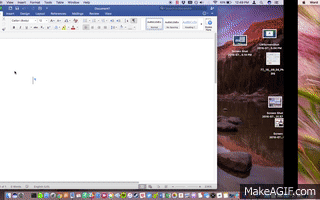
Today we want to discuss a productivity trick on OS X that has been around for quite some time, but may have slipped your notice: the ability to assign various applications to load on specific desktops in OS X.
Why would you want to do this? Quite simply, this helps to dramatically declutter your workflow. Over the course of the average workday, you may open a dozen or so windows and applications. If you work on only one desktop, then it quickly becomes an unwieldy mess.

Just look at the following view in Exposé, where we have nine items open at once. It’s fairly difficult to sort through this quickly. Sure, you can use the Dock or Command+Tab to go from app to app, but that’s very time consuming and awkward.

So how do desktop application assignments work? Simply, each time you load an application from the Dock, it will appear on whichever desktop you assign it to, which means you need to have at least two or more virtual desktops already available. You may already be a wiz with virtual desktops, whisking between them with the greatest of ease, so assigning applications to them will just up your game even more.
You’ll notice that when you right-click on an app icon in the Dock, it gives you an array of options.

There are options to keep or remove it from the Dock, open when you first log in, to show its location in Finder, and of course, assignment options.
The easiest way to make sure your applications open on the desktop of your choosing is to be on that desktop. So, you can either swipe from virtual desktop to virtual desktop using three fingers on your trackpad, use assigned keyboard shortcuts, or use Exposé and directly choose your desktop that way.

Once you’re on the desktop you want, simply then use the assign options to then tell your application to open on “This Desktop” from thereon.

You’ll notice there are two other persistent options under the “Assign To” menu, “None” and “All Desktops”. When you select “None” then the application will open on whatever desktop you happen to have open. When the the application is assigned to all, then it will quite literally open on every one of your desktops.

Play around with it and see what kind of arrangement works best for you. For instance, you might have a desktop where only productivity apps open, and a desktop where only entertainment apps open, or you might have a desktop with all your frequently used apps and another with occasionally used apps.
How you arrange things is entirely up to you, what’s important is that once you reduce your window clutter and create an application scheme, you’ll find your workflow is a lot more productive and efficient, especially if you use keyboard shortcuts to zip between desktops.